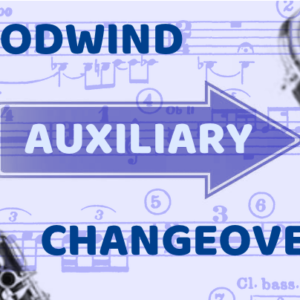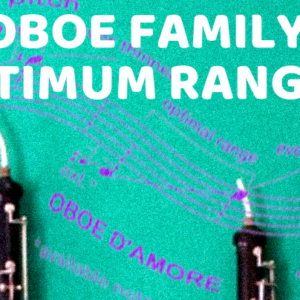Heckelphone/Bass Oboe – The Realities
Oboe Family Optimum Ranges
The best, most characteristic sound of the oboe comes from its middle octave- and-a-half: from F4 at the bottom of the staff up to B-flat5 above. The optimum registers of lower oboe family members lie in their lower ranges, with implications of a wider separation from the oboe than one might expect. The previous tips…
Read more…
Oboe – Slurring Up vs. Down
Slurring up on the oboe is always simpler than slurring down. The above is a very simple statement for a complex situation. Slurring up implies a certain tightening of the embouchure, while slurring down is the opposite. But as we’ve seen with the horn, it’s much simpler to increase pressure smoothly than it is to…
Read more…
Oboe – Phrasing
Use the oboe’s seemingly endless ability to phrase to its best effect in constructing powerfully phrased episodes, but never take it for granted. As I mentioned earlier this week, the oboe is a remarkably small device driven by the overpowered engine of the player’s breath and embouchure. In some ways, it’s the opposite of the…
Read more…
Oboe – Lowest Octave
Be aware of the problems of dynamic control represented by the oboe’s lowest register. It’s been said by some orchestration teachers that the oboe represents the opposite dynamic characteristics to the flute. As the the flute gets lower and lower in pitch, it becomes ever softer and more delicate, while the oboe gets louder and…
Read more…
Oboe – Articulation
Be aware of the extreme precision of oboe articulation, and use it to its best effect. There’s a certain default position about oboe in the minds of many beginning composers – to see it mainly as a lyrical resource. While oboe is one of the most expressive of instruments in emoting a legato passage, restricting…
Read more…
Oboe – Vibrato Formation and Frequency
The orchestrator needs to be aware of the process by which oboists vibrato, and how the variability of speed thereof affects musical expression. As most composers are aware string vibrato is caused by a minute oscillation of the fingertips, essentially a direct modulation of pitch. But oboe can’t vibrato in pitch from a direct application…
Read more…


